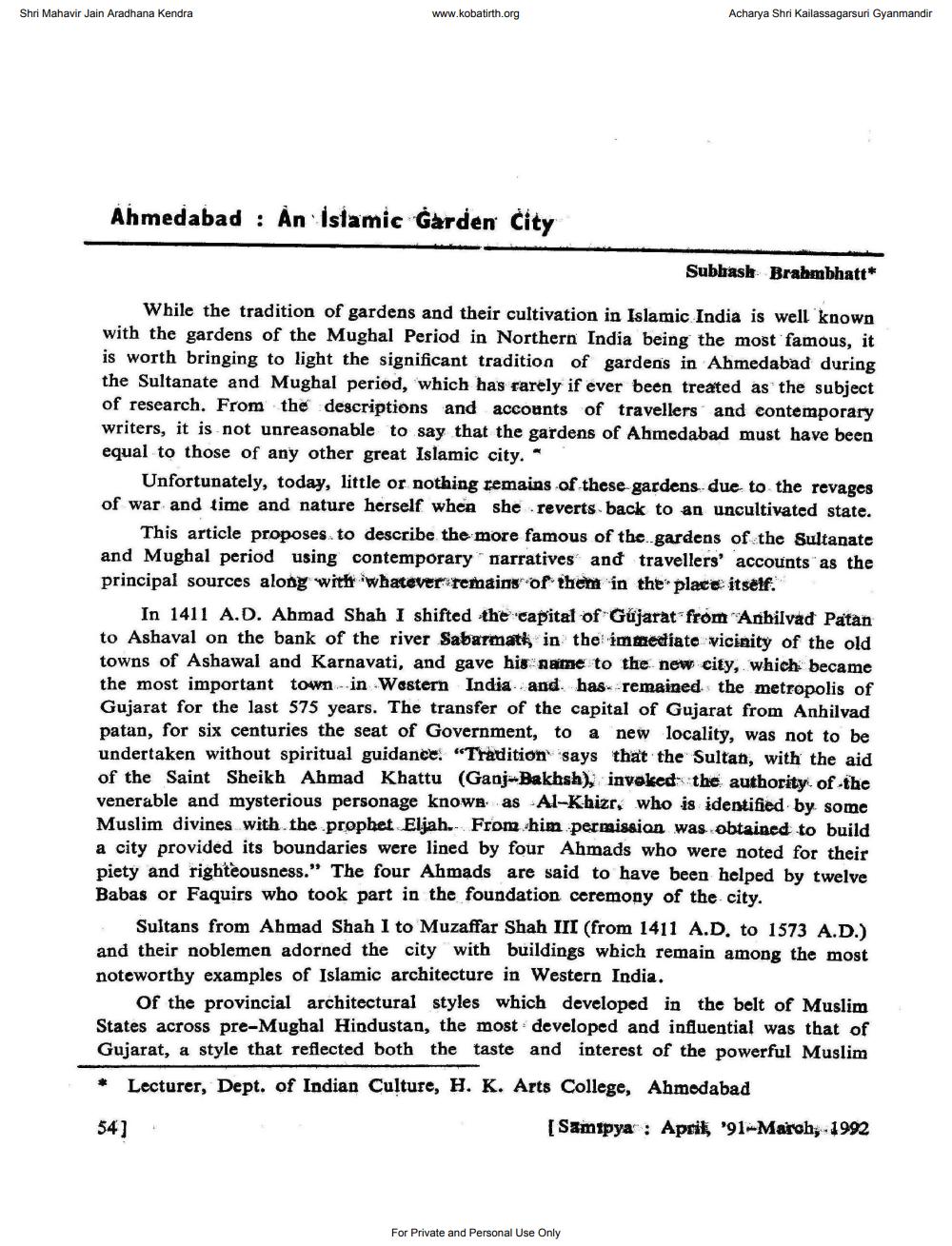________________
Shri Mahavir Jain Aradhana Kendra
www.kobatirth.org
Ahmedabad An Islamic Garden City
:
Subhash Brahmbhatt*
While the tradition of gardens and their cultivation in Islamic India is well known with the gardens of the Mughal Period in Northern India being the most famous, it is worth bringing to light the significant tradition of gardens in Ahmedabad during the Sultanate and Mughal period, which has rarely if ever been treated as the subject of research. From the descriptions and accounts of travellers and contemporary writers, it is not unreasonable to say that the gardens of Ahmedabad must have been equal to those of any other great Islamic city. "
Acharya Shri Kailassagarsuri Gyanmandir
Unfortunately, today, little or nothing remains of these gardens due to the revages of war and time and nature herself when she reverts back to an uncultivated state.
This article proposes to describe the more famous of the gardens of the Sultanate and Mughal period using contemporary narratives and travellers' accounts as the principal sources along with whatever remains of them in the place itself.
In 1411 A.D. Ahmad Shah I shifted the capital of Gujarat from Anhilvad Patan to Ashaval on the bank of the river Sabarmatk, in the immediate vicinity of the old towns of Ashawal and Karnavati, and gave his name to the new city, which became the most important town in Western India and has remained the metropolis of Gujarat for the last 575 years. The transfer of the capital of Gujarat from Anhilvad patan, for six centuries the seat of Government, to a new locality, was not to be undertaken without spiritual guidance. "Tratlition says that the Sultan, with the aid. of the Saint Sheikh Ahmad Khattu (Ganj-Bakhsh), invoked the authority of the venerable and mysterious personage known as Al-Khizr, who is identified by some Muslim divines with the prophet Eljah. From him permission was obtained to build a city provided its boundaries were lined by four Ahmads who were noted for their piety and righteousness." The four Ahmads are said to have been helped by twelve Babas or Faquirs who took part in the foundation ceremony of the city.
54]
Sultans from Ahmad Shah I to Muzaffar Shah III (from 1411 A.D. to 1573 A.D.) and their noblemen adorned the city with buildings which remain among the most noteworthy examples of Islamic architecture in Western India.
Of the provincial architectural styles which developed in the belt of Muslim States across pre-Mughal Hindustan, the most developed and influential was that of Gujarat, a style that reflected both the taste and interest of the powerful Muslim Lecturer, Dept. of Indian Culture, H. K. Arts College, Ahmedabad
[Samipya: April, '91-March, 1992
For Private and Personal Use Only




